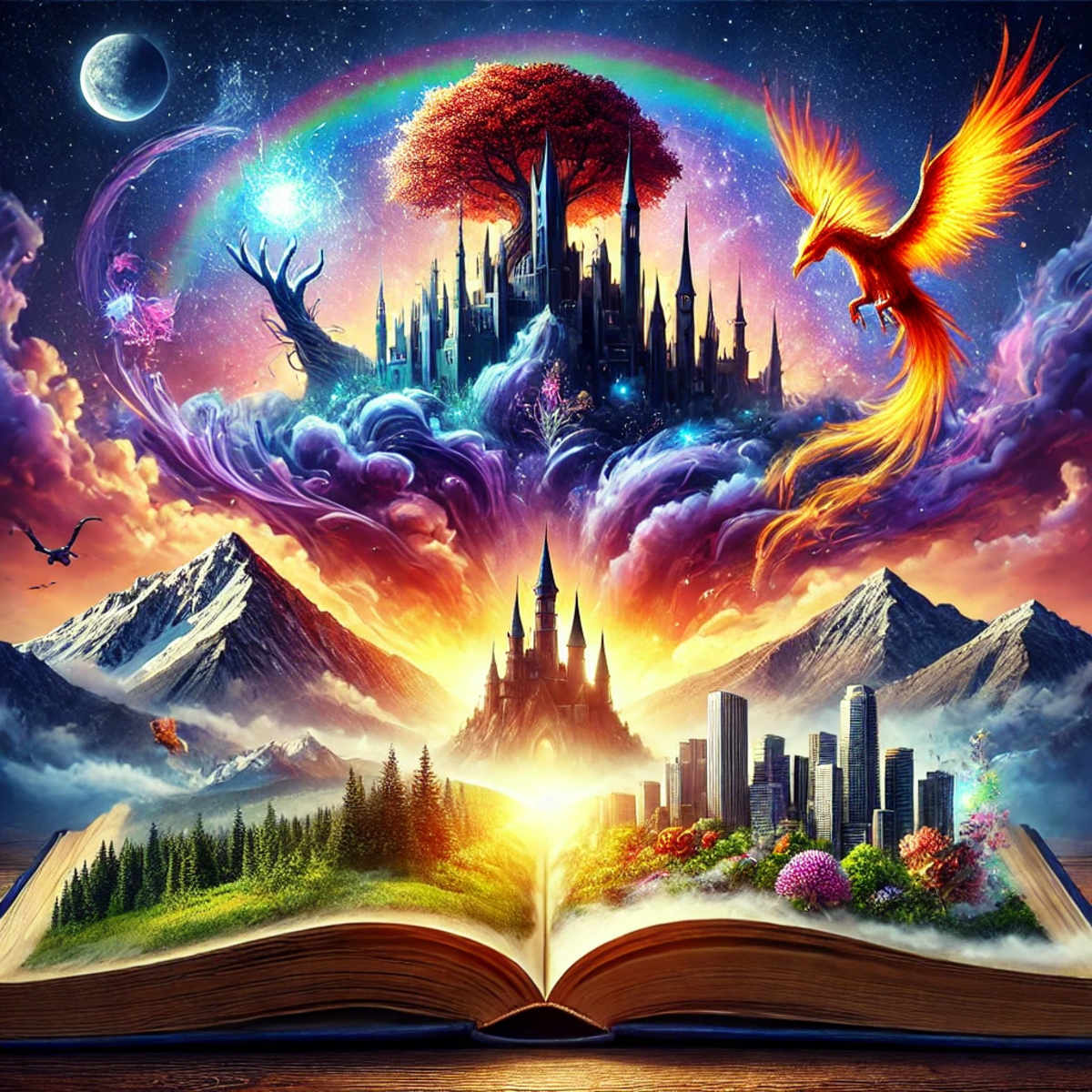
Have you ever finished a book and felt like you’d truly lived in that world—tasted the food, walked the streets, feared the same dangers as the characters? That’s the magic of immersive world-building—and honestly, it’s my favorite part of storytelling.
As a multi-genre author, I’ve learned that crafting vivid, believable settings is what truly transports readers beyond the page. Today, I’m pulling back the curtain on my world-building process—the techniques, challenges, and creative secrets that help me breathe life into the worlds I create.
Starting with a Strong Concept 🌟
Every world I build starts with a single spark—a theme or a what if question that ignites my imagination and sets the tone for everything that follows.
What if memories were currency?
What if magic was outlawed in a kingdom built on lies?
That core concept doesn’t just shape the setting—it anchors the emotional heart and central conflict of the story. The stronger and more emotionally connected the concept, the more immersive the world becomes.
My golden rule: Align your world’s design with your story’s emotional core. World-building isn’t just backdrop—it’s the fuel that drives your narrative.
Establishing Rules and Boundaries 🛡️
The best worlds don’t just enchant—they function. Even the most magical realms need rules to stay believable. Establishing clear boundaries, societal norms, and systems of power keeps your world grounded and prevents plot holes.
If your world includes magic, ask yourself:
- What are its limits?
- Who controls it—and who’s denied access?
- What are the consequences of misuse?
The same goes for politics, technology, or even geography. Rules create stakes—and stakes create tension that fuels great fiction.
Drawing Inspiration from the Real World 🌍
I constantly mine the real world for inspiration—history, architecture, geography, languages, and cultural rituals all feed into my fictional settings.
For example, one of my worlds borrowed from the grandeur of ancient Mesopotamian architecture and their intricate justice systems, which shaped the society’s power struggles and conflicts. Small, authentic details like these make even the most fantastical worlds feel lived-in and relatable.
Tip: Study civilizations, folklore, and even niche subcultures. The more you know, the richer your world becomes.
My Go-To Techniques for Creating Immersive Settings 🛠️
Here’s what I lean on to bring worlds to life:
✔️ Engage the Senses
Sensory details are the secret sauce of world-building. Readers don’t just want to see your world—they want to smell it, taste it, feel it.
- What does the air smell like?
- What sounds fill the streets—laughter, haggling, the clank of armor?
- Can readers feel the chill of the mountain wind or the oppressive desert heat?
The more senses you engage, the more real your world becomes.
✔️ Build Cultural Depth
I love layering rich traditions, social hierarchies, and belief systems that influence character choices and conflicts.
Ask yourself:
- What are the society’s taboos?
- What festivals or rituals do people celebrate?
- How do these beliefs fuel tensions, alliances, or rebellion?
Culture adds complexity—and complexity keeps readers hooked.
✔️ Design Geography and Environment
Geography shapes your story. An icy tundra demands survival skills. A bustling city hums with political intrigue.
Your setting should influence mood, plot, and character arcs. Where your story happens is never random—it’s another character in the narrative.
Balancing Detail Without Losing the Story ⚖️
Here’s the trickiest part of world-building: striking the right balance. Too much detail overwhelms the reader. Too little, and the world feels flat.
My approach? I reveal world details naturally—through action, dialogue, and character observations. No info-dumps, no long explanations.
Instead of describing a city in a block of text, I let readers discover it as a character buys street food, overhears gossip, or dodges a city guard. Details live in the world and the story.
Lessons Learned from Building Worlds Across Genres 📚
Writing fantasy, romance, dystopian, and thrillers taught me this: every world needs to balance the familiar with the new.
Readers crave wonder—but they also need grounding. Anchor your wildest ideas in relatable emotions and recognizable motivations. That’s how you pull readers in and keep them turning pages.
The biggest lesson? Trust your readers. Hint at histories. Suggest depths. Leave a few mysteries for their imagination to fill. The unseen corners of your world often feel the most real.
Final Thoughts: Why World-Building Matters 🧠
World-building is never just backdrop. It’s an active force shaping every story beat, every decision your characters make.
Done right, world-building transforms your book from a story… into an experience. It deepens emotion, amplifies conflict, and lingers with readers long after they’ve turned the last page.
Your world is where imagination meets the reader’s heart. Make it unforgettable.
FAQs About My World-Building Process ❓
Q1: How do you keep track of all your world-building details?
I build detailed world bibles—maps, timelines, character profiles, political systems, magic rules, you name it. This keeps everything consistent, especially when writing across series or returning to a world years later.
Q2: How do you avoid info-dumping your world-building?
I reveal world details through action, dialogue, and character reactions—never by pausing the story for an exposition dump. Readers absorb the world while things happen.
Q3: Do your worlds ever inspire new stories?
Absolutely! A well-built world always sparks new ideas. Sometimes a side character demands their own story. Sometimes a historical footnote becomes the next plot. World-building is an endless well of inspiration.
What Worlds Have Stayed With You?
I’d love to hear from you—what fictional worlds have left a lasting mark on you as a reader or writer? What made them unforgettable? Share hby sending me a email at contact@stephanietyo.com!
Till next time,
with love,
Stephanie Tyo
Multi-Genre Author